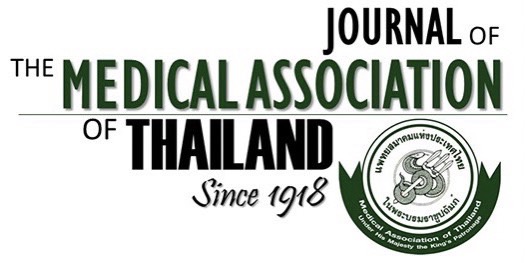Intracranial Tumors Affecting Visual System: 5-Year Review in Prasat Neurological Institute(cid:31)
Patcharapim Masaya-anon MD*, Jing Lorpattanakasem MD*
Affiliation : (cid:31) This article was presented in the 3rd Asian Neuro-ophthalmology Society Session of the 16th Annual International Neuro-ophthalmology Society Congress on 29th November to 2nd December 2006 in Tokyo, Japan * Department of Neuro-ophthalmology, Prasat Neurological Institute, Bangkok
Objectives: To study the types of intracranial tumors with histological confirmation that impair visual system
and to determine the neuro-ophthalmic manifestations in patients with intracranial tumors.
Material and Method: Retrospective review of patients with intracranial tumors who were pre-operatively
examined by ophthalmologists in the neuro-ophthalmology unit, Prasat Neurological Institute. All patients
had tissue pathology confirmation, and the authors excluded the patients with recurrence or post-operative
status of intracranial tumors.
Results : Male to female ratio was 1:2.5 of 149 patients. The age onset was highest in the 4th to 5th decade. The
three most common types of intracranial tumors were meningioma (45%), pituitary adenoma (32.9%), tumors
of neuroepithelial tissues (6.7%) and craniopharyngioma (6.7%).Common neuro-ophthalmological symp-
toms were visual blur (88.6%) and proptosis (12.1%). In addition, common signs were visual field defect
(80.5%), abnormal optic discs (69.7%), and relatively afferent pupillary defect (43.6%). Ninety percent of the
patients had the visual difficulty symptom for less than 12 months, before the diagnosis of intracranial tumors.
Fifty-nine percent of the patients presented with visual acuity 20/200 or worse, and 15.4% of the patients
presented with no light perception (NLP).
Conclusion : From the study, meningioma is the most common tumor that impairs the visual pathway structures
followed by pituitary adenoma. Furthermore, decreased visual acuity, visual field defects, abnormal optic
discs, and relatively afferent pupillary defect are the common neuro-ophthalmic features that should be
carefully examined to avoid late detection of intracranial tumors.
Keywords : Intracranial tumors, Visual impairment, Visual field defect, Optic disc



